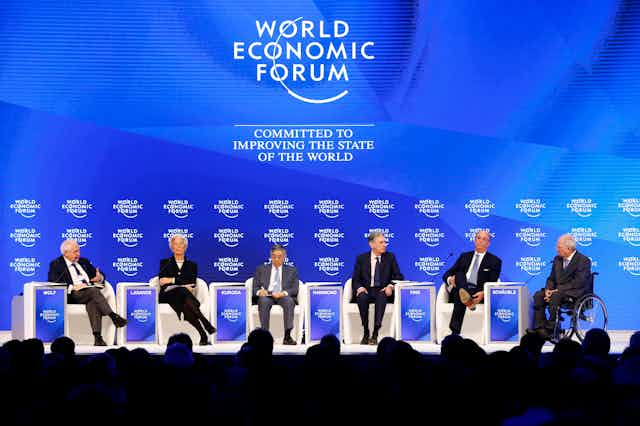If I ask you to picture an economist, what’s the first image that comes to your mind? I’m guessing it’s a man, probably with grey hair, a suit and a certain air of authority. And that’s not surprising: that is pretty much the public face of economics in Australia.
Very few women have reached the most senior ranks of the profession. Australia has never had a woman federal treasurer or Treasury secretary and only one women has been elevated to the head of a major economic agency at the Commonwealth level (Jane Halton, Department of Finance). Rosemary Huxtable is the current Secretary of the Australian Department of Finance. We have never had a female chief economist at a Big Four bank, and very few major think tanks have been run by women.
The dearth of women in leadership positions raises a red flag for the quality of Australia’s economic decision-making. Too many “like” individuals reduces the range of perspectives informing decisions. It also means wasted talent: if you bench half your potential team then the one that takes to the field is probably not your strongest.
Those in senior roles now recognise the problem. Reserve Bank head Philip Lowe, Labor Treasury spokesman Chris Bowen and the secretary of the Department of Prime Minister and Cabinet and former Treasury head Martin Parkinson are all persuasive advocates for improving the gender balance in economic leadership roles.

Where are things going wrong?
In Australia, like many other nations, the economics profession has a “leaky pipeline”: women’s participation starts off strong but progressively falls through the ranks.
At university, women account for between 35% and 45% of undergraduate economics students. They progress through to honours-level economics at a similar rate to males.
At our most significant economic agencies – Treasury and the RBA – about 40% to 50% of the staff are women. But they account for only around one third of the senior management positions. At the very top of Treasury, there are now two women (Maryanne Mrakovcic and Meghan Quinn) among the six secretary and deputy secretary positions. At the RBA there are two (Michele Bullock and Luci Ellis) in the top seven.
The leakage is even starker in academia where women make up half of research/teaching fellow positions in economics departments, just over a quarter of senior lecturers, but only 15% of associate professors and professors. And at the prestigious Group of 8 Universities, fewer than 10% of economics professors are women.
When it comes to the media, the pipeline nearly dries up. The 2016 Women for Media Reportshowed that of the people cited as “analyst” or “economist” in major Australian newspapers, just 9% were women. This was lower than the percentage of women cited with the position of CEO or Chair. My own survey of newspaper opinion pages showed that only 12% of opinion pieces in the Australian Financial Review over six months of last year were written by women.
But perhaps most concerning for the economics profession is we may now also have a problem at the source: the share of female enrolments at high school and university is falling.
In NSW, our analysis of data from the NSW Education Standards Authority found the number of HSC economic enrolments has fallen 16% in the past five years – and among female students the fall was 21%. This pattern is repeated in other states.
At universities, our preliminary analysis of student enrolment data from Commonwealth Department of Education and Training suggests the share of females enrolled in economics courses fell from 43% in 2001 to 39% in 2015.
In other words, the economics profession’s “women problem” is now stymieing its ability to attract the next generation.
Why has economics fallen out of fashion with younger women?
Economics teacher at Burwood Girl’s High School, Leith Thompson, has received a scholarship from the Reserve Bank to study this question. She says a number of misconceptions about economics have contributed. “There is a perception that economics is about maths and theory, and that you only study economics if you want a career in finance.”
And teaching methods don’t always help. “Students are not necessarily taught how economics applies to the bigger picture societal issues they are interested in,” she says.
As economics enrolments fall, subjects with more obvious career paths such as Business Studies and Legal Studies have been growing strongly.
The Economic Society of Australia has recently established a Women in Economics Network to tackle these pipeline problems for economics. It aims to broaden people’s view of economists and create role models for the next generation of talented young women. So that just maybe, when your daughter pictures an economist, the first image that comes to her mind might be a woman.
This article was updated after publication to reflect Rosemary Huxtable’s appointment as Secretary of the Department of Finance.

